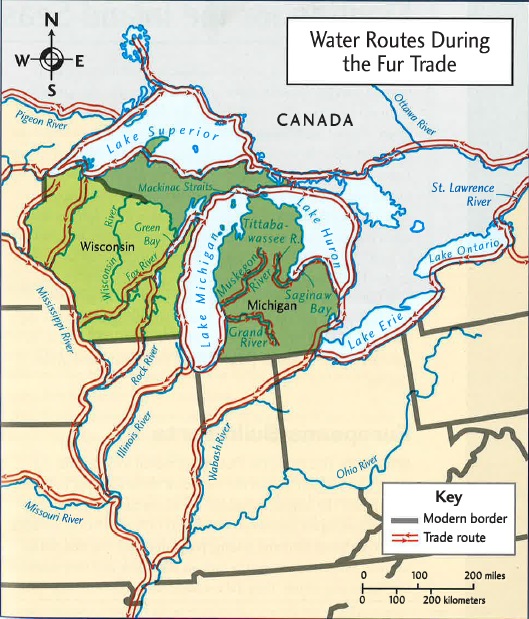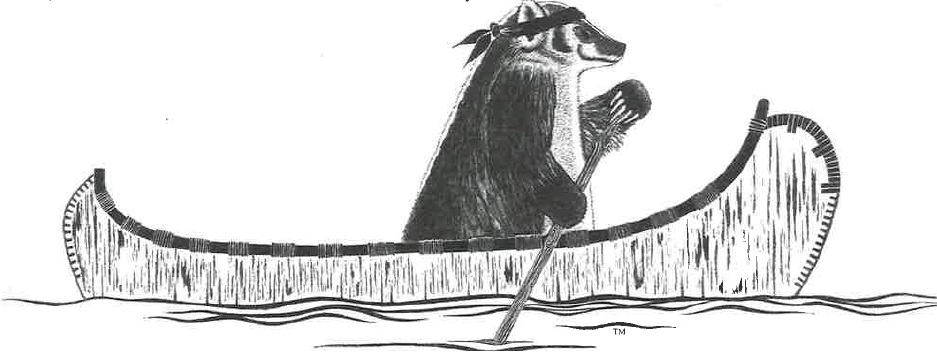
When French fur traders and explorers (or Voyageurs) began showing up in the Great Lakes region in the 1600s, they observed that the local indigenous peoples hunted beaver, mink, and otter for both food and clothing. At the time, hats made from beaver pelts were very popular in Europe. Fur traders and explorers would trade things like blankets, metal, cooking pots, axe heads, woolen fabric, and glass beads in exchange for these pelts. French fur traders generally did not trap beaver themselves, they relied on indigenous peoples to trap the animals and trade them for European goods. Fur traders would trade European goods to indigenous peoples in fall and would receive the pelts in exchange in the spring. This system kept indigenous peoples indebted, ensuring a continuous supply of beaver pelts to Europe.
French fur traders had no maps to guide them when they arrived in the Great Lakes region. Another trade good was knowledge and French fur traders used the knowledge of indigenous peoples to guide their way. Indigenous peoples had already developed a water highway with connecting portage trails across the Great Lakes region. Fur traders were then able to appropriate and find waterways that would take them into the interior, to a vibrant land full of plants, animals and resources. French fur traders were hoping to find a waterway that would be a shortcut across North America, but they were disappointed to find that none existed.
French fur traders and explorers were impressed by indigenous birch bark canoes because they were easy to control, light enough to carry for portaging, and strong enough to carry a lot of cargo. Fur traders adapted these canoes for their use, and these were the primary vehicle for them to travel the Great Lakes and its tributaries. French Fur Traders made large birchbark canoes known as Montreal canoes that could carry three to four tons of goods and about eight or nine fur traders and their indigenous guides. Though, due to their size they were too heavy to portage and too large to navigate small rivers, so they could not journey further north or west. The smaller and lighter Nord (French for “North”) canoe was the answer to moving further inland because it could be portaged and navigate small rivers. Though it could only carry half the cargo and half the crew but could move more swiftly.
Fur traders would travel westward to Wisconsin from the straits of Mackinac, hugging the shoreline across northern Lake Michigan. They would then travel south through Green Bay to the Fox River and take then take the Fox River inland. They would then portage their canoes and goods a short distance to reach the Wisconsin River. They would then travel down the Wisconsin River until it flowed into the Mississippi River near Prairie Du Chien. Fur trade outposts were established at Green Bay at Fort La Baye, Prairie Du Chien at Fort Saint Nicholas and at Fort Winnebago located at the portage between the Fox and Wisconsin Rivers. Fur traders would also travel down the coast to what is now Milwaukee and then on to what is now Chicago where they could also take the Illinois and Chicago Rivers to the Mississippi Rivers. Fur traders would also hug the shore across southern Lake Superior where they would set up a trading outpost on Madeline Island known as Fort La Pointe before continuing to the St. Louis River in what is now Duluth. Fur traders would then take the same rivers and lakes back to the Atlantic Ocean where the pelts were loaded on ships and taken back to France.


